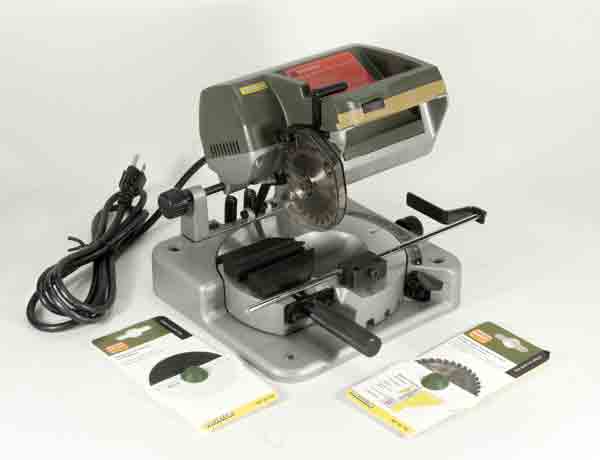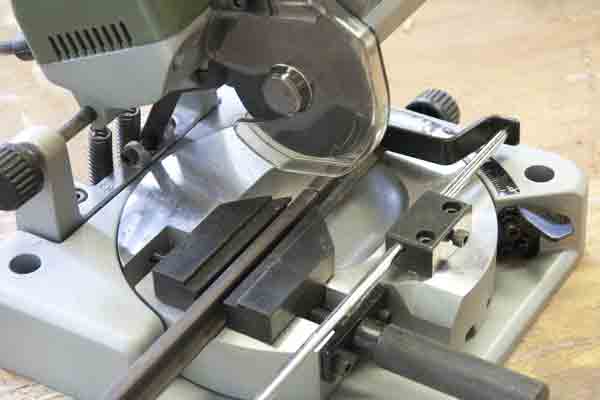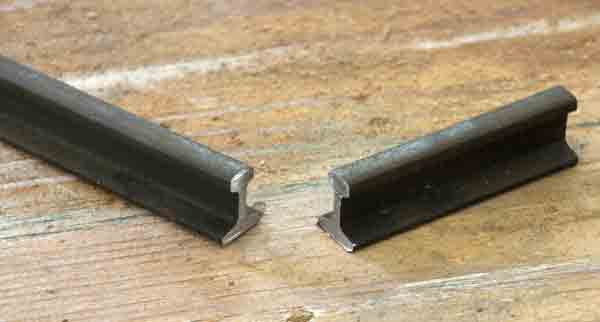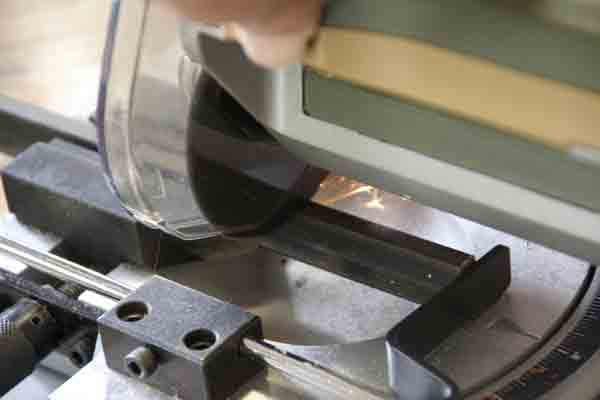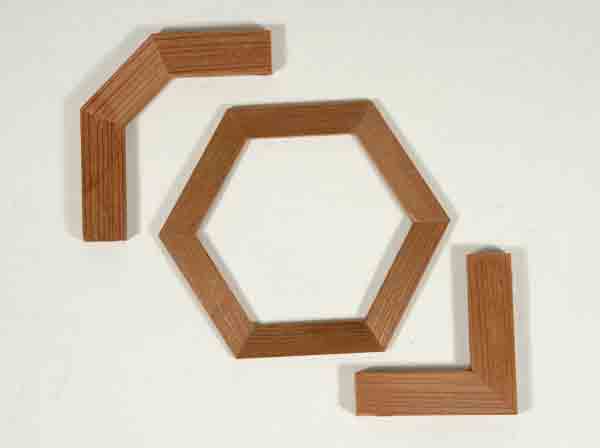Proxxon
Prox-Tech, Inc.
PO Box 1909
Hickory NC 28603 US
Price: $310
Website: http://shop.prox-tech.com
Miniature chop and miter saw (#KGS80); will cut non-ferrous metals, plastics, and wood, as supplied; swiveling table, indexable at 15° intervals; built-in work vise; built-in work stop for multiple cuts of the same length; tooth-belt drive from DC motor; 9″ x 9″ table area; up to 1″ cutting depth; instruction manual included; 24 tooth, tungsten-carbide blade included; weight, 12 pounds; cut-off disc (#28729) available separately for cutting ferrous metals; 36 tooth, tungsten-carbide blade (#28732) available separately for finer cuts in wood and plastic
Pros: Solid, cast-aluminum construction; great flexibility—angles can be cut in 1° increments; self-centering work vise will hold work up to 13/16″ wide; convenient on-off thumb switch; safety catch prevents accidental lowering of blade; built-in blade guard moves aside as blade is lowered
Cons: None
The motor unit is hinged at the rear. A pair of powerful springs keeps it raised. A built-in hand grip is used to lower the blade into the work. Before this can be done, the conveniently located safety latch must be released. To turn the power on, a thumb switch is close at hand—the motor is on only as long as the switch is depressed. The cutting head can be moved from side to side using a handwheel on the left-hand side. This allows positioning of the blade as close to the vise as possible to ensure more precise cuts.
The machine is supplied with a 24 tooth, tungsten-carbide blade that will go through wood and most plastics with ease, as well as some non-ferrous metals, like brass and aluminum. Also available is a 36 tooth, tungsten-carbide blade (#28732, $49.50) and an abrasive cut-off wheel (#28729, $6.90) for ferrous metals. To change blades, a screw is removed from the blade guard, which is then rotated up, out of the way. Flats on the blade shaft must be gripped with a wrench (not supplied), and an Allen wrench (supplied) is then used to loosen the screw holding the blade. This is a left-hand screw that tightens in the opposite direction (as noted in the instructions).
The cutting head does not rotate for miter cuts, but the base does. It can be moved 45° in either direction. A handwheel on the right side will lock it in place at any desired point and the base will also automatically index at 15° intervals.
A built-in vise holds the work. This has one grooved jaw for gripping round work (pipes and tubes). Both of the jaws move, automatically centering the work. In addition, a removable depth stop is provided to allow the precise cutting of multiple pieces to the same length. This is adjusted with the same Allen wrench that fits all of the other Allen screws used on the machine.
To test the machine, I took it out to my shop and plugged it in. The instructions suggest that it be bolted to your work surface but I found the saw to be plenty stable just sitting on the bench top. I tried it first on scraps of different hardnesses of wood, from redwood to maple. The 24-tooth blade had no trouble with any wood fed to it. I then tried some mitered corners—45°, 22.5°, and 60° (30° on the base’s scale). This resulted in precisely cut angles that fit together accurately.
I then swapped the blade for the cutting disc to see what it would do with some relatively heavy steel. I decided to cut a piece of solid steel rail that was 58″ tall. No problem—the motor scarcely slowed, while the wheel created an impressive shower of sparks.
Since this is a miniature tool, it won’t take very large material. A round piece that’s 1″ in diameter or a flat piece that’s 2916″ wide is the biggest it will do, and only when set at 90°. The maximum size is reduced somewhat when you start cutting angles. However, for model work of the type that most of us do, this is a superb tool. It’s a professional-quality unit that will provide decades of service. It cuts precisely with accurate repeatability, and is an excellent companion to Proxxon’s miniature table saw.





